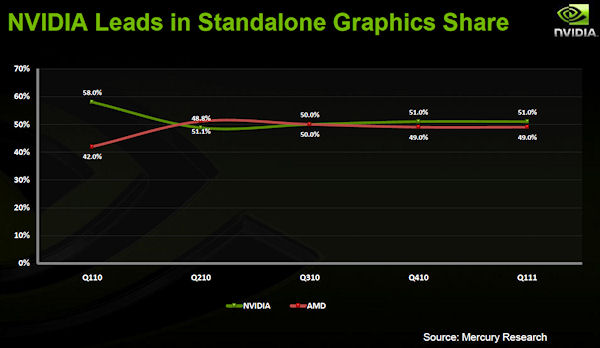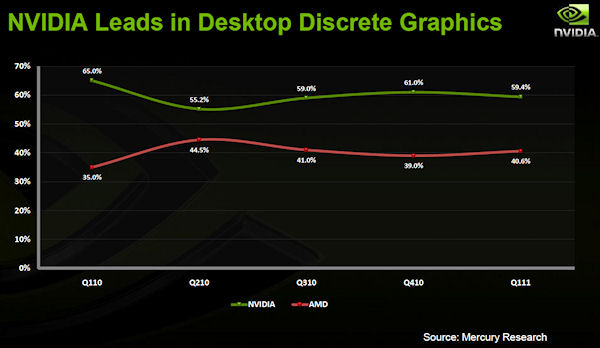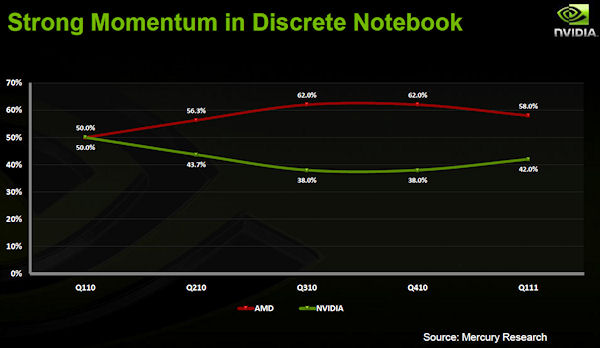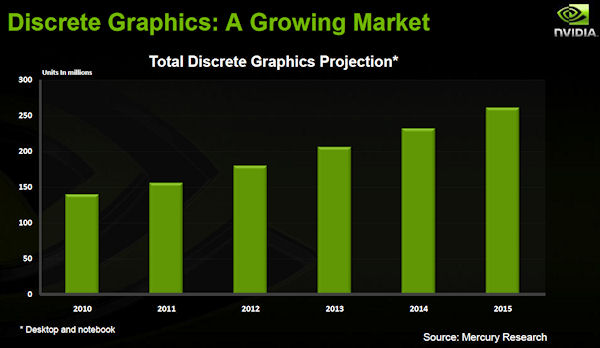Indiscrete figures
Yesterday we reported on some figures from graphics market-watcher JPR, which showed NVIDIA suffering a 28.4 percent year-on-year fall in its GPU shipments. Today NVIDIA contacted us to insist those figures only tell part of the story.
What NVIDIA was keen to stress was that a) the drop-off is mainly explained by it exiting the IGP market, and b) it's still doing just fine in discrete graphics.
We were reminded that NVIDIA completely exited the IGP market between Q1 and Q2 of last year. Given that the JPR figures reflected total volume of GPU shipments, as opposed to value, it's not surprising to see such a precipitous fall for NVIDIA. On the flip-side, NVIDIA's GPU shipment growth was still well behind the other two in Q1 of this year, so not everything can be blamed on the immediate aftermath of it quitting IGPs.
To back up its discrete claims NVIDIA sent us a slide deck containing data from a recently-updated PC graphics report from Mercury Research. You can see the key slides below, and they show NVIDIA regaining a lot of the discrete ground it lost a year ago. NVIDIA also insisted the full JPR report (we only had access to the press release), also reflected this.
On the whole, assuming these Mercury figures are accurate, we think it's fair enough for NVIDIA to point out that much of the reported decline was old news and that it's still doing fine in discrete.
We were told that advantages like Optimus technology, which allows dynamic switching between integrated and discrete graphics, depending on the task, means the vast majority of Intel Sandy Bridge systems that opt for discrete graphics will chose NVIDIA. If that's the case, however, Apple doesn't seem to have got the memo.

















